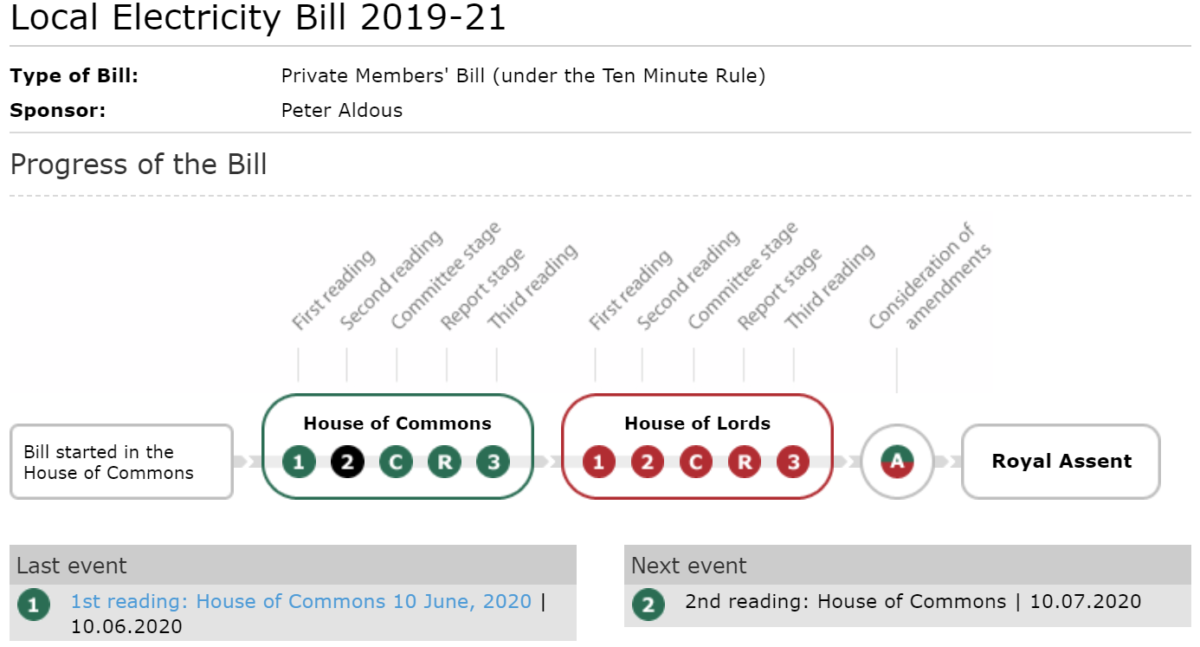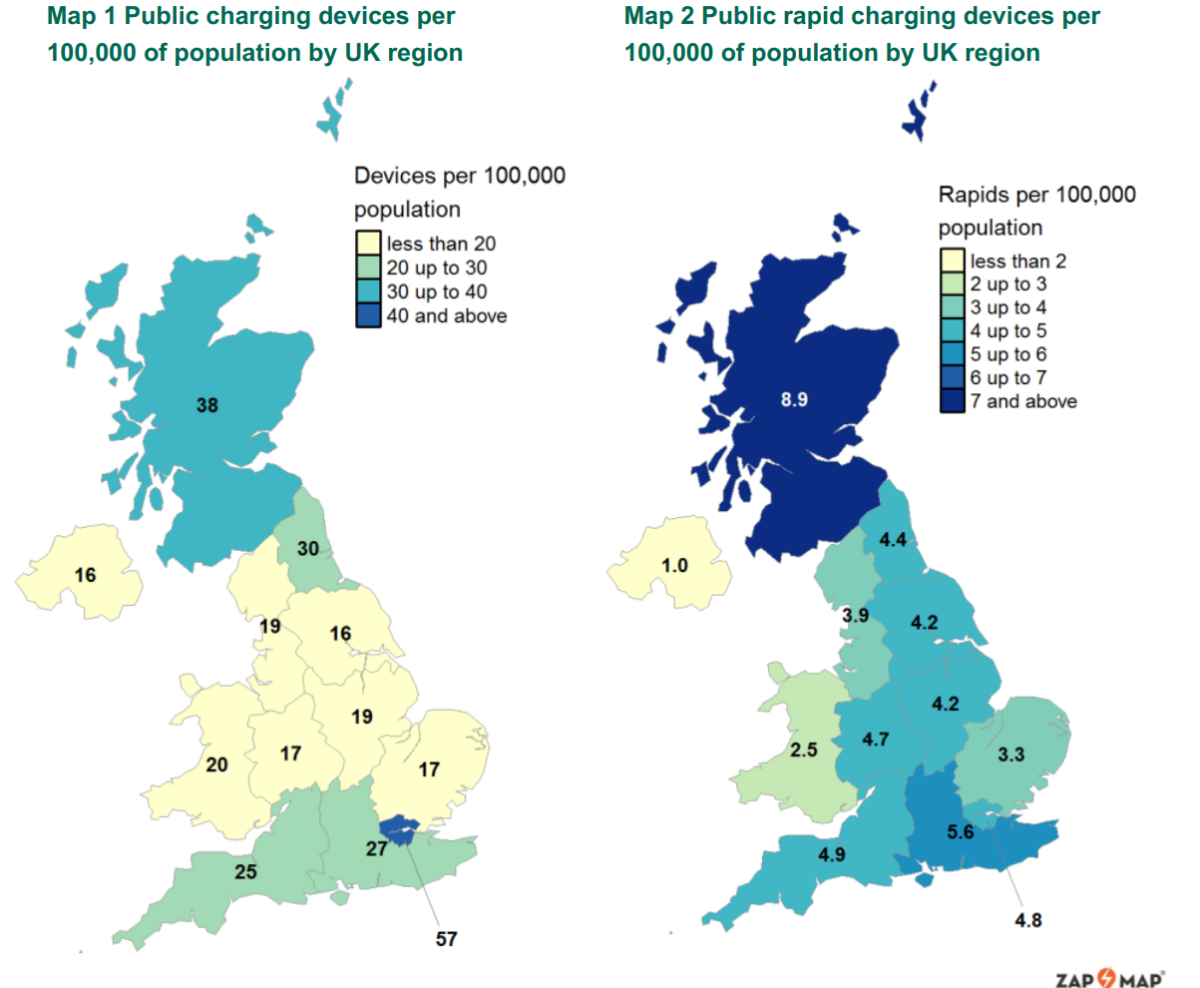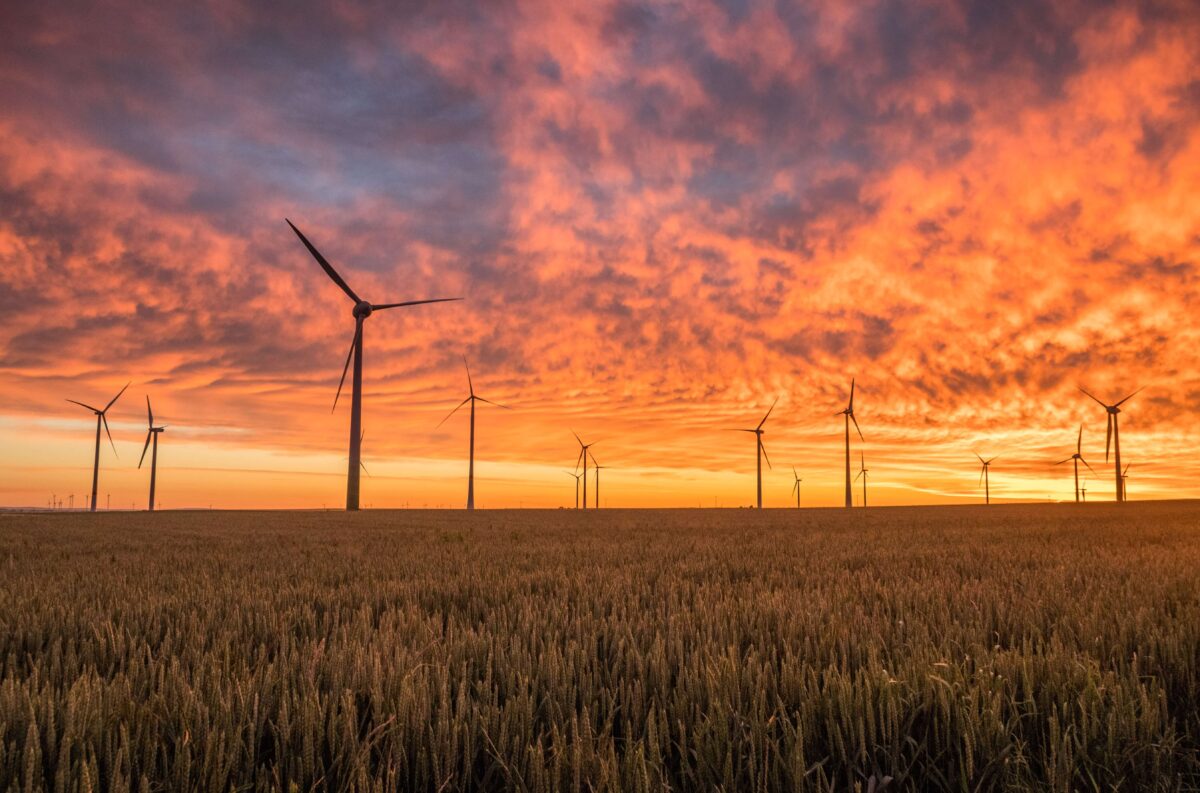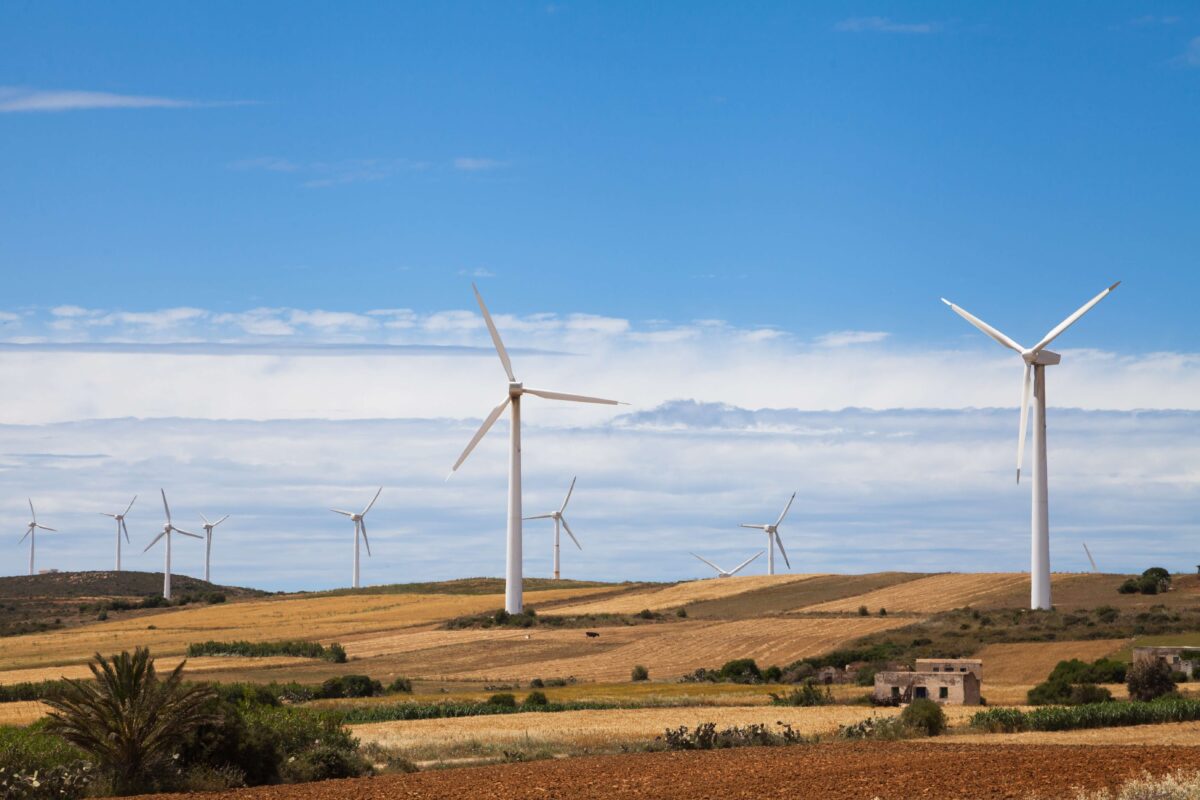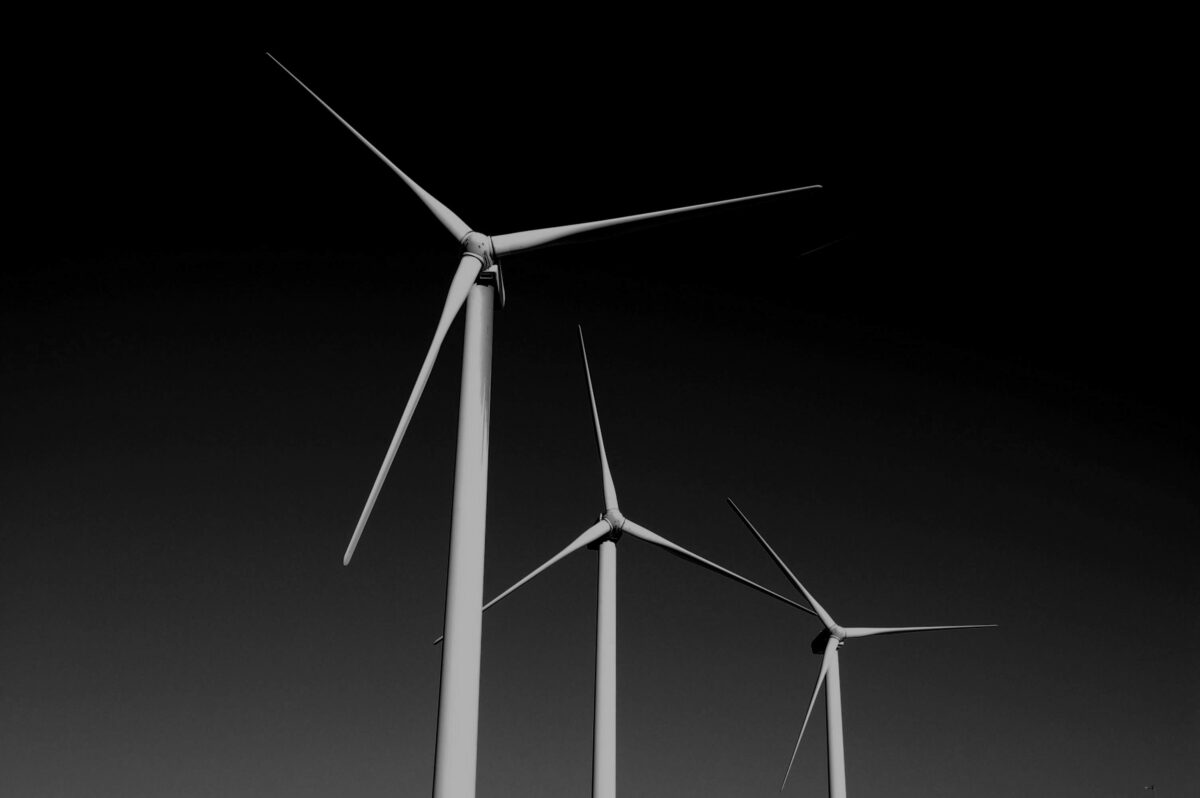June 2020: Free webinars, energy and AI, Local Electricity Bill, transport updates and more!
Welcome to the June newsletter from the Oxford Martin School Programme on Integrating Renewable Energy! Register for your free place on a series of very interesting webinars from the Programme, and hear about progress from Project LEO, and how AI could be useful in energy and helping the fuel poor. We look at developments in transport: it’s more than electric planes, trains, and automobiles! We have some news bites and feature the cost of curtailment. Finally, in dictionary corner, we define the Balancing and Settlement Code which plays a crucial role in keeping the lights on. If you have been forwarded this email and like it, please do subscribe directly!
Hear all about it!
The Oxford Martin Programme on Integrating Renewable Energy is running a series of free webinars over the summer.
We’re covering a range of topics, all of which are relevant in our journey to an energy future which is cleaner, greener, and more socially equitable than at present. Our speakers are drawn from academia and industry, to give a rounded perspective on theory and practicality. The webinars will comprise a short presentation from the speakers, and then a Q&A session. Please join us! Just register via Eventbrite to receive the joining instructions.
Here’s what’s coming up (Wednesdays, between 11am to 12pm (UTC+1):
- Wed 24 June – Energy and the Literature of Moral Dilemmas with David Aberbach, Antonella Mazzone, and Helen Gavin (University of Oxford)
- Wed 8 July – Smart Local Energy Systems: social, technical and operational aspects with Sarah Darby & Scot Wheeler (University of Oxford) and Stevie Adams (Scottish and Southern Electricity Networks)
- Wed 15 July – Electric vehicles: broadening access and supporting electricity networks Sivapriya Mothilal Bhagavathy (University of Oxford) and Esther Dudek (EA Technology)
- Wed 5 August – Energy access versus reliability: opportunities and challenges in Sierra Leone Hindolo George-Williams & John Rhys (University of Oxford) and Kelcise Vidal Sesay (Sierra Leone Electricity and Water Regulatory Commission)
- Wed 19 August – Current challenges of renewable energy: integration in China with José Maria Valenzuela (University of Oxford) and Dr Hao Zhang (Chinese University of Hong Kong)
- Wed 2 September – Achieving Net Zero with Malcolm McCulloch (University of Oxford) and Eric Brown (Energy Systems Catapult)
- Wed 16 September – Energy efficiency in a post-lockdown world: Earthshot not Moonshot Nick Eyre (University of Oxford), Paul Massara (Member of the Government’s Committee on Fuel Poverty) and Andrew Wright (University of Durham)
- Wed 30 September – Seizing the opportunity to raise hydrocarbon taxation with Daniel Hardy (St Antony’s College, Oxford) and guest.
Please share the news about webinars to anyone who you think would be interested!
Update from Project LEO
Project Local Energy Oxfordshire (LEO) has passed its second Innovate UK Milestone, allowing it to progress to the next stage of delivering a smarter energy system in Oxfordshire. Passing this assessment is fantastic news as it allows Project LEO to go on to develop larger energy trials, building on its learning to date.
Smart and adaptable local energy systems will be a huge part of the UK’s future plans for net zero, and can unlock cheaper clean energy. Project LEO aims to demonstrate what can be achieved by creating a holistic and flexible approach to energy sources, demand and usage within a local area. It aims to develop tools to support the development of a local energy market in Oxfordshire and a model that can be replicated in other parts of the country. One of the reasons Oxfordshire was chosen was due to existing significant constraints on the local electricity network.
Academics and industry experts are working together to undertake one of the most wide-ranging and holistic ‘smart grid trials’ ever conducted in the UK. The trials will show how renewable energy technologies such as hydro, wind and solar, can contribute flexibly to meeting electricity demand at a local level. They will help to assess the impact of the technologies on the electricity network as a whole, and also during e.g. periods of peak demand.
So far, the trials have included testing electrical storage with the Oxford Bus Company’s battery, using the Sandford Lock hydropower plant as a flexible generation asset, and testing demand side response within Oxford University’s Sackler Library Building.
The trials have been conducted using the Lean Ecosystem Transition / Minimum Viable System approach, developed and led by Prof. Malcolm McCulloch and Dr Scot Wheeler. This provides a framework to develop new business models, services and systems, that can disrupt existing markets and unlock new value potential. You can watch a recorded webinar with Prof Malcolm McCulloch about the theory of the lean ecosystem transition; and tune into Dr Scot Wheeler’s discussion of the smart-grid trials in Oxfordshire on 26 June or on 8 July.
The Local Electricity Bill
Community-scale renewable energy has huge potential to help mitigate climate change and benefit local economies. Smart local energy grids are changing the way neighbourhoods produce and consume electricity, around the world, while also providing resilience and promoting self-generation.
In the UK, the benefits of local renewable energy cannot be fully realised yet, hence the need for the work in Project LEO and other initiatives.
So a key step forward in supporting local community energy is the passing, unopposed, of the first stage of a private members bill: The Local Electricity Bill.
The Local Electricity Bill was developed by Power for People, and a very large group of supporters including Community Energy England, Community Energy Wales, Community Energy Scotland, WWF, Greenpeace, Friends of the Earth, the RSPB, 43 county and local authorities and 187 MPs.
Its stated purpose is to “encourage and enable the local supply of electricity”. It does this by tackling a key barrier faced by community renewable energy generators in selling their power directly to locals, namely registered supplier of energy to customers. To remove this barrier, the Local Electricity Bill has set out a way to make the costs and complexity proportionate to the size of the local energy producer. This would help local electricity generators to become local suppliers. The Bill is a first attempt to lay out a mechanism that will fix the UK’s local supply problem. It is accepted that there is scope for improvement and refinement, and new ideas are welcome for how that can be done.
Following this first successful step, it will move to the House of Lords for the second reading on 10 July 2020. Private members’ bills are unlikely to become law as little parliamentary time is devoted to them.
So what’s the point?
Getting the status of a Presentation Bill raises awareness of the issue; it is a milestone in the process of it possibly becoming law while further support is generated. And some private members bills do indeed become law if there is sufficient support: which there is for this Bill In this case, Ofgem is encouraged to examine the proposals set out in the Bill, and to require that local suppliers face costs and complexity proportionate to the scale of their business.
Energy and AI
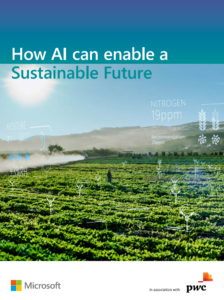 Could Artificial Intelligence (AI) help reduce global emissions by up to 4% by 2030, create thousands of jobs and boost global GDP by 4.4%? This is a finding from a report by Microsoft and PwC which sets out the enormous potential for AI to be an important tool in the effort to decouple economic growth from rising carbon emissions, and enable a prosperous, just, and more sustainable future using advanced technologies.
Could Artificial Intelligence (AI) help reduce global emissions by up to 4% by 2030, create thousands of jobs and boost global GDP by 4.4%? This is a finding from a report by Microsoft and PwC which sets out the enormous potential for AI to be an important tool in the effort to decouple economic growth from rising carbon emissions, and enable a prosperous, just, and more sustainable future using advanced technologies.
Based on this potential, a group of businesses, tech companies and universities, including large energy industry players, are calling for the government to create a £100m UK-based International Centre for AI, Energy and Climate.
The group assert that AI could play a significant role in the UK transition to a low carbon energy system, and such a Centre would allow the UK to develop and deploy data science applications to help tackle climate change, and systemically improve the efficiency of our energy system.
Now is the opportunity to align post-coronovirus recovery stimuli with the need to attain net zero and also embrace data technologies. The latter is essential to cope with, and increase the quality of, ever increasing data volumes, digitalisation assets, and complexity of assets connected to the grid, including renewable energy assets, storage and electric cars, and systemically improve the efficiency of our energy system.
Now is the opportunity to align post-coronovirus recovery stimuli with the need to attain net zero and also embrace data technologies. The latter is essential to cope with, and increase the quality of, ever increasing data volumes, digitalisation assets, and complexity of assets connected to the grid, including renewable energy assets, storage and electric cars.
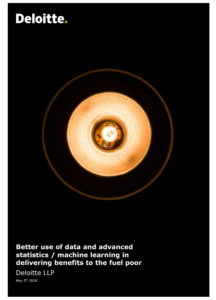 Policies aimed at assisting the fuel poor are currently constrained by difficulty in efficiently identifying the location of fuel poor households. To address this, the Government’s Committee on Fuel Poverty commissioned a report on how we could better use data and AI to help direct funds to help those in fuel poverty.
Policies aimed at assisting the fuel poor are currently constrained by difficulty in efficiently identifying the location of fuel poor households. To address this, the Government’s Committee on Fuel Poverty commissioned a report on how we could better use data and AI to help direct funds to help those in fuel poverty.
The objective of the report was to identify whether such households could be better identified by the use of data and advanced statistics and machine learning. The Committee also wanted to understand the barriers to building such techniques into government policies.
The findings show that there could be the potential for significant efficiencies in the increased use of AI but there are issues that need to be addressed before such technologies could be implemented. As a result, the Committee recommended that (1) AI should be used with government data to improve the identification of individual households in fuel poverty, (2) structured governance as well as resources should be committed to taking this forward as a matter of urgency, and (3) that the report should be shared widely across government and stakeholders.
If you would like to know more, you are encouraged to join a webinar with the Committee and the report authors, Deloitte, to hear about the findings and ask questions, on 23rd June 2020, at 11am.
Planes, Trains & Automobiles… and ships… and micro-mobility!
There have been many zero emission transport developments recently. Here are just a few!
Electric plane in world first
Pipistrel, a Slovenia-based manufacturer, has developed the ‘Velis Electro’, a two-seater, electric plane which in May 2020 became the world’s first electric plane to receive certification by the European Union. In June it was then granted worldwide certification to operate, by the European Aviation Safety Agency, which the regulator hailed as a massive step forward for battery-powered flight.
The plane’s powertrain comprises two batteries with a liquid cooling system. One battery is in the bow, the other behind the cockpit: this is to provide redundancy should one battery fail. The powertrain has demonstrated the ability to withstand faults, battery thermal runaway events, and crash loads as part of the certification process. The plane is designed for pilot training, has a cruising speed of 170 km/h and has a flight time of up to 50 minutes.
Many more electric planes and vertical take-off and landing (eVTOL) aircraft are in development, as well as electric flying taxis and cars. Other non-fossil fuels are also available, including hydrogen, and plasma power…
Jet Zero
On 12 June, the UK government announced partnership with the aviation industry. A new “Jet Zero” Council will be established to help make the aviation and aerospace sectors environmentally fit for the future. In his speech, Grant Shapps, stated that the Jet Zero Council will,
“be charged with making net zero emissions possible for future flights. Our goal – within a generation – will be to demonstrate flight across the Atlantic, without harming the environment…”
Mr Shapps mentioned Velocys who are building a plant for aviation biofuels in Lincolnshire, and the National Centre for Propulsion and Power at the University of Cambridge. The initiative has been welcomed by the aviation industry.
Subsidies
 In other airline news, a report by by the New Economics Foundation and the group Possible have shown that UK subsidies to the airline industry before coronovirus, in the form of not having to pay tax on fuel or VAT, amount to £7 billion annually.
In other airline news, a report by by the New Economics Foundation and the group Possible have shown that UK subsidies to the airline industry before coronovirus, in the form of not having to pay tax on fuel or VAT, amount to £7 billion annually.
Imagine what could be done if these tax breaks were redirected to developing clean technologies!
Electric rails

The electrification of the four-mile long Severn Tunnel has been completed by Network Rail meaning that trains can move under only electric power from London to Cardiff. This achievement has resulted in quicker and greener journey times, with trains producing no diesel emissions.
Great news!
Electric wheels
Data from Zap Map and used by the Department for Transport, show that between 2015 to April 2020, the number of public electric vehicle (EV) charging devices has grown by 402%.
There are now double the number of charging devices compared to petrol stations (although this is not a direct comparison of charging devices to individual petrol pumps).
The distribution of charging devices is uneven, with the highest density found in London and Scotland, and the lowest in Northern Ireland.
In other news, the government has given permission for electric vehicles to have a green striped registration plate from autumn 2020. This is as part of a wider plan to promote low emission transport and drive a green economic recovery following the economic impacts of covid-19.
Wind powered cargo ships
 A new dawn of trade has re-emerged. Wind powered cargo ships are now back in business. Old (and some brand new, see picture) tall ships are sailing goods around the world.
A new dawn of trade has re-emerged. Wind powered cargo ships are now back in business. Old (and some brand new, see picture) tall ships are sailing goods around the world.
Entrepreneurs are giving producers an opportunity to ship their goods using a fully sustainable renewable transport option. Goods currently being transported in this way include coffee, wine, olive oil and more.
The shipping industry moves most of the traded goods around the planet using container ships powered by Heavy Fuel Oil or ‘bunker oil’ which contains higher sulphur levels than diesel. As such it is a particularly polluting fuel.
While wind powered ships carry a tiny fraction of the huge amounts transported by cargo ships, their use has promoted design improvements for standard container ships. You can hear more about innovation in this area from the inspiring People Facing the World podcast including how fitting new sails onto modern cargo ships means they can use reduce their fuel consumption and greenhouse gas emissions.
E-scooters!
 PaPart of the Government’s £2 billion package to support active travel to help the country emerge from the coronavirus lock-down will be used to improve cycle lanes.
PaPart of the Government’s £2 billion package to support active travel to help the country emerge from the coronavirus lock-down will be used to improve cycle lanes.
It will also be used to fast-track trials of e-scooters and rental schemes in four local authorities, including Birmingham and Coventry.
The Department for Transport is expected to publish its framework for e-scooters next week, which will give details of how the system of rented scooters will work. Privately owned scooters will still be banned.
With sales of e-bikes booming, Lime has written a white paper with a cardiologist providing evidence that micro mobility is the best way to travel to ensure social distancing, and minimise the chances of catching coronavirus: either using your own bike, or using a shared one.
Did you know you can also convert your existing pedal bike an e-bike?
News Bites
A solar plus storage leasing deal has been implemented at the Humanitarian Hub in Malakal, in sunny South Sudan, managed by the UN’s International Organisation for Migration. It is hoped the system will reduce diesel use by 80%, onsite power costs by 18%, greenhouse gas emissions, air pollution, and noise. Such leasing deals could support humanitarian operations elsewhere.  The system was partly funded by DFID.
The system was partly funded by DFID.
Permission is being sought from Ofgem to build the world’s first, fully renewable (green) hydrogen network for homes in Scotland if permission is given by Ofgem.
 After having won the gobal “Greening of the Island Award” for energy in 2018, the island of Saint Helena in the South Atlantic ocean signed a power purchase agreement to meet its 100% Renewable Energy Target in May 2020. The creation of new wind farms, solar power plants and battery storage capacity, should result in enough renewable energy capacity to meet 100% of its current demand.
After having won the gobal “Greening of the Island Award” for energy in 2018, the island of Saint Helena in the South Atlantic ocean signed a power purchase agreement to meet its 100% Renewable Energy Target in May 2020. The creation of new wind farms, solar power plants and battery storage capacity, should result in enough renewable energy capacity to meet 100% of its current demand.
£100 million is the annual cost of nuclear power infliexibility in Scotland alone. A study has revealed the huge cost of inflexible nuclear power plants in Scotland in causing the switch-off (curtailment) of windfarms to prevent the grid overloading. Recent analysis of the ‘constraint payments’ (borne by electricity consumers) in 2017 were close to £100 million, and around £130 million in 2019. Yet the study shows that in 2017 94% of the constrained windfarm could have been used if there had been no nuclear plants. For 2019 the figure was 77%. This is about ~ £100 million each year. The larger the proportion of nuclear power feeding the grid, the higher the proportion of windfarm compensation payments.
Words, Words, Words
 In this regular feature, we shine a light on words used in energy circles. Last month, we featured reactive power.
In this regular feature, we shine a light on words used in energy circles. Last month, we featured reactive power.
This month: The Balancing and Settlement Code!
Is this about how to balance when ice skating and settle into a perfect salchow landing?
Er, no.
The Balancing and Settlement Code is signed by all the players in GB’s wholesale electricity market including generators, suppliers, non-physical traders, distribution network operators, interconnector users, demand-side response aggregators’, owners of the high voltage networks and more!
Balancing means matching the demand for electricity with a supply. Settlement means payment for the electricity. The Code is a multi-party contract with rules and processes to make sure that payments for imbalances in wholesale electricity supply and demand are settled accurately.
In the UK it is essential that electricity is always available whenever the customer demands it. So suppliers of electricity must assess, in advance, how much electricity will be demanded at any particular time and create a contract from a specific generator to buy a specific amount of electricity.
In real time, electricity supply and demand is assessed every half-hour of every day to ensure there isn’t much or too little. If demand from a supplier’s customers is different to the amount of electricity that the supplier has bought from generators, customers will still get electricity. This is because National Grid Electricity System Operator steps in to balance the supply and demand by calling upon another generator to make up a shortfall, or ask suppliers to reduce demand. Settlement takes place later on according to the rules of the BSC. The settlement process is done by Elexon, which compares how much electricity was contracted against the actual amount used, work out the prices for these differences and makes sure that any differences are paid.
Read more in Elexon’s excellent Dummies Guide to the Balancing and Settlement Code!





